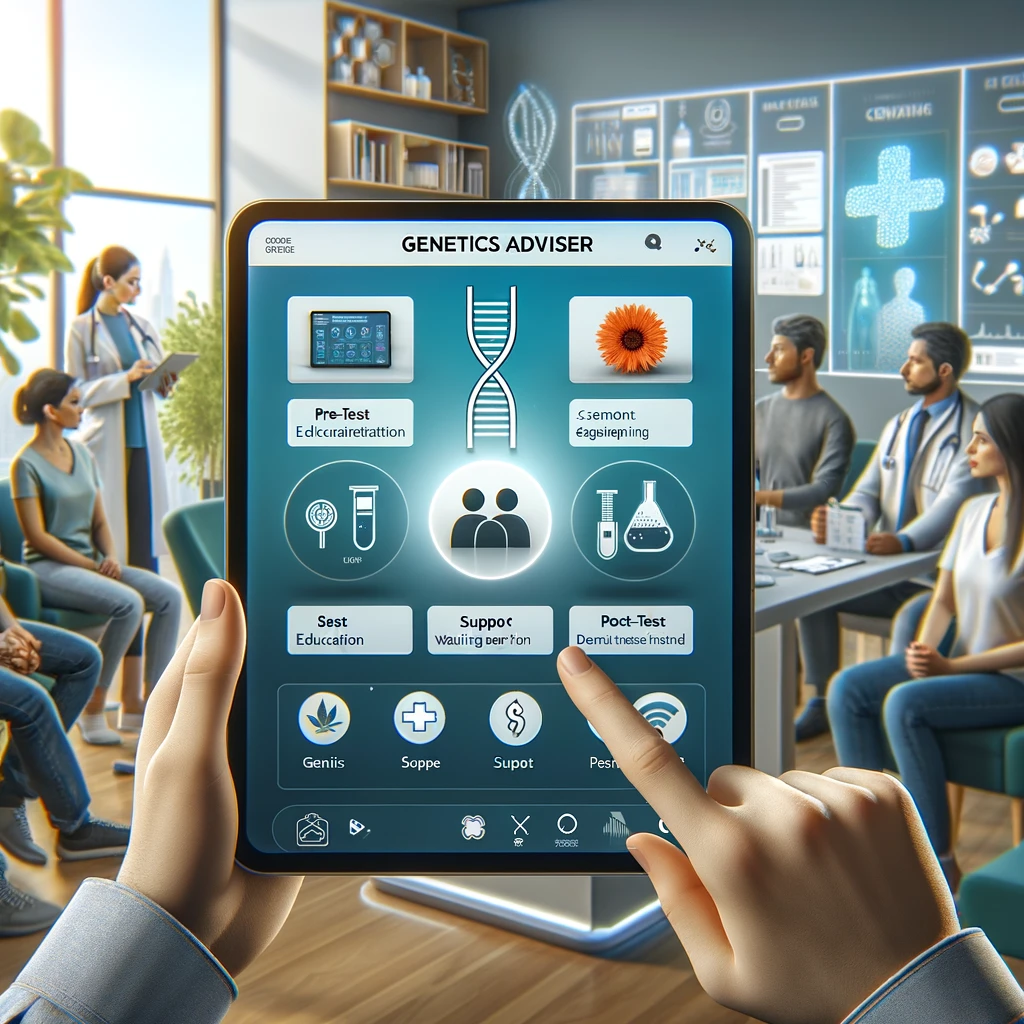Transforming Patient Experience in Genomic Testing with Genetics Adviser: A Digital Health Application

A study by several researchers from the University of Toronto and Li Ka Shing Knowledge Institute of St.Michael’s Hospital, Toronto, Canada explored about creating a helpful digital tool called Genetics Adviser. This tool is meant to help patients who are going through genetic testing. Recently, the need for genetic testing has grown a lot, but there aren't enough healthcare workers to keep up. This makes it hard for everyone to get the care they need. Digital tools like Genetics Adviser, developed by researchers at St. Michael's Hospital in Toronto, can make things easier, faster, and less expensive.
User-Centered Design for Patient Needs
To make sure the Genetics Adviser was useful, the creators used a method called "user-centered design." This means they asked real patients, healthcare workers, and experts for their ideas and feedback throughout the whole process. The tool was designed to give patients information and support before they take a genetic test, help them while they wait for the results, and explain the results afterward. The tool can be used by different kinds of patients and for different types of genetic tests.
The creators first tried to understand what patients and healthcare workers needed. They did interviews with people who had experience with genetic testing and found out what was missing and what could be improved. They learned that patients and doctors wanted a tool that did more than just help make decisions. They wanted something that also helped explain the results and gave support during the waiting period. Based on this, the team made a prototype, which is like a rough draft of the tool, and then asked for feedback from an advisory board made up of patients and experts.
Testing and Refining the Prototype
Next, they tested the prototype with 25 people, including patients and genetics practitioners. Most of these people found the Genetics Adviser easy to use and understand. They liked how the tool was organized and thought it would help them understand genetic testing better. After this initial testing, the team made some changes to the tool based on what the participants suggested. They added explanations to make it clear what each part of the tool was for, included a progress bar to show how much of the tool was left, and made the language more balanced so it wouldn't make people worry too much about the emotional impact of genetic testing.
After making these changes, they tested the final version of the Genetics Adviser with another group of 19 people. This group also included patients and members of the general public. These participants had similar positive feedback. They found the tool easy to navigate and appreciated its design. They also felt that the information was clear and balanced and that the tool would be helpful for others. Some participants suggested adding more information about privacy and insurance, and others pointed out that people without good internet access or digital skills might have trouble using the tool.
Positive Reception and Versatility
Overall, the Genetics Adviser was well-received by both patients and healthcare workers. It was found to be easy to use, informative, and helpful. The tool supports patients through the entire genetic testing process, from learning about the tests to understanding the results. It can be used for different types of genetic tests and in various settings, like hospitals, research labs, and even at home. This makes it a flexible and valuable tool for improving genetic care.
The Importance of Real User Feedback
The study shows how important it is to involve real users in the design of digital health tools. By asking for feedback from patients and healthcare workers, the creators of Genetics Adviser were able to make a tool that truly meets the needs of its users. The success of the Genetics Adviser suggests that similar tools could help make genetic testing more accessible and efficient, reducing wait times and healthcare costs while improving patient care. Future research will look at how well the tool works in real-world settings and how it can be improved further to help even more people.
- FIRST PUBLISHED IN:
- Devdiscourse










